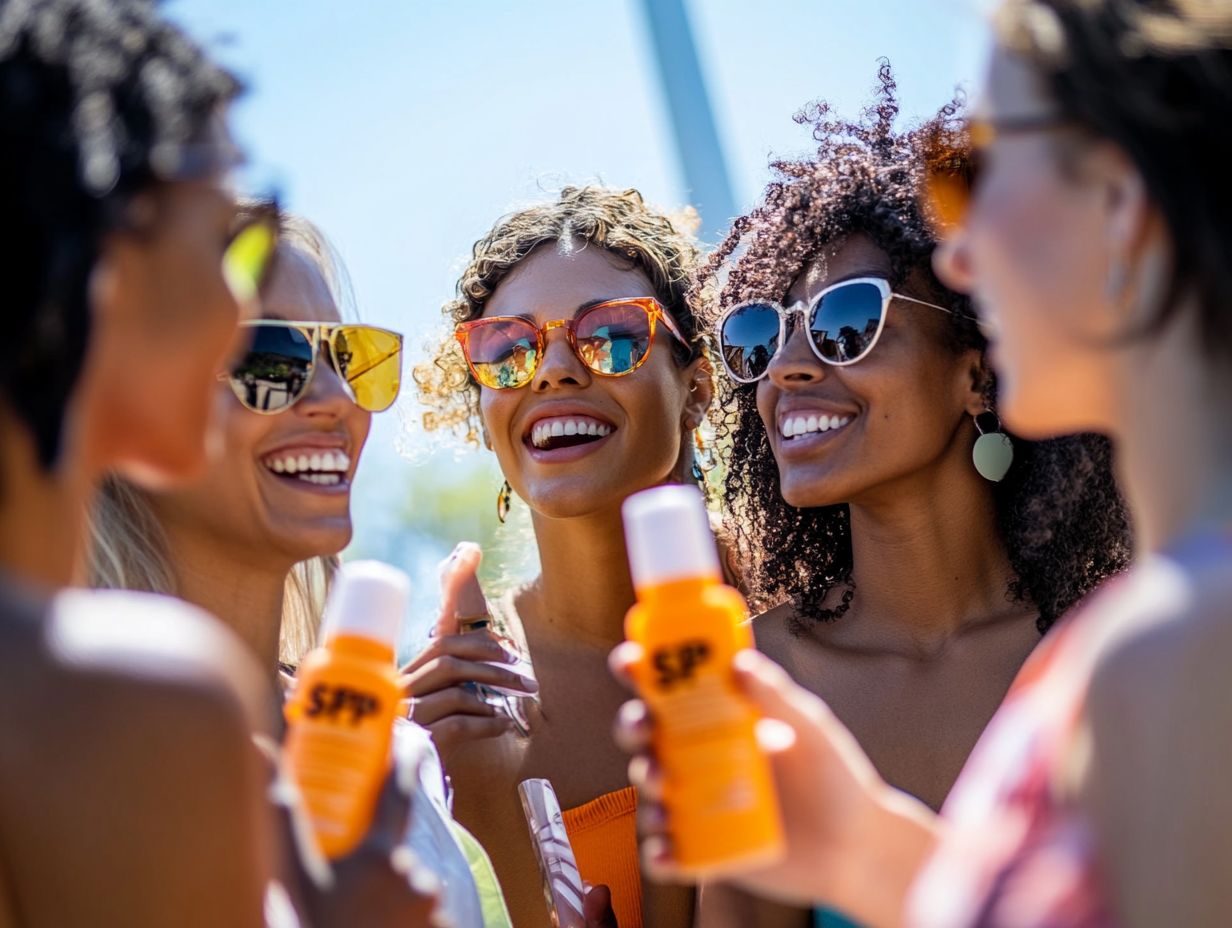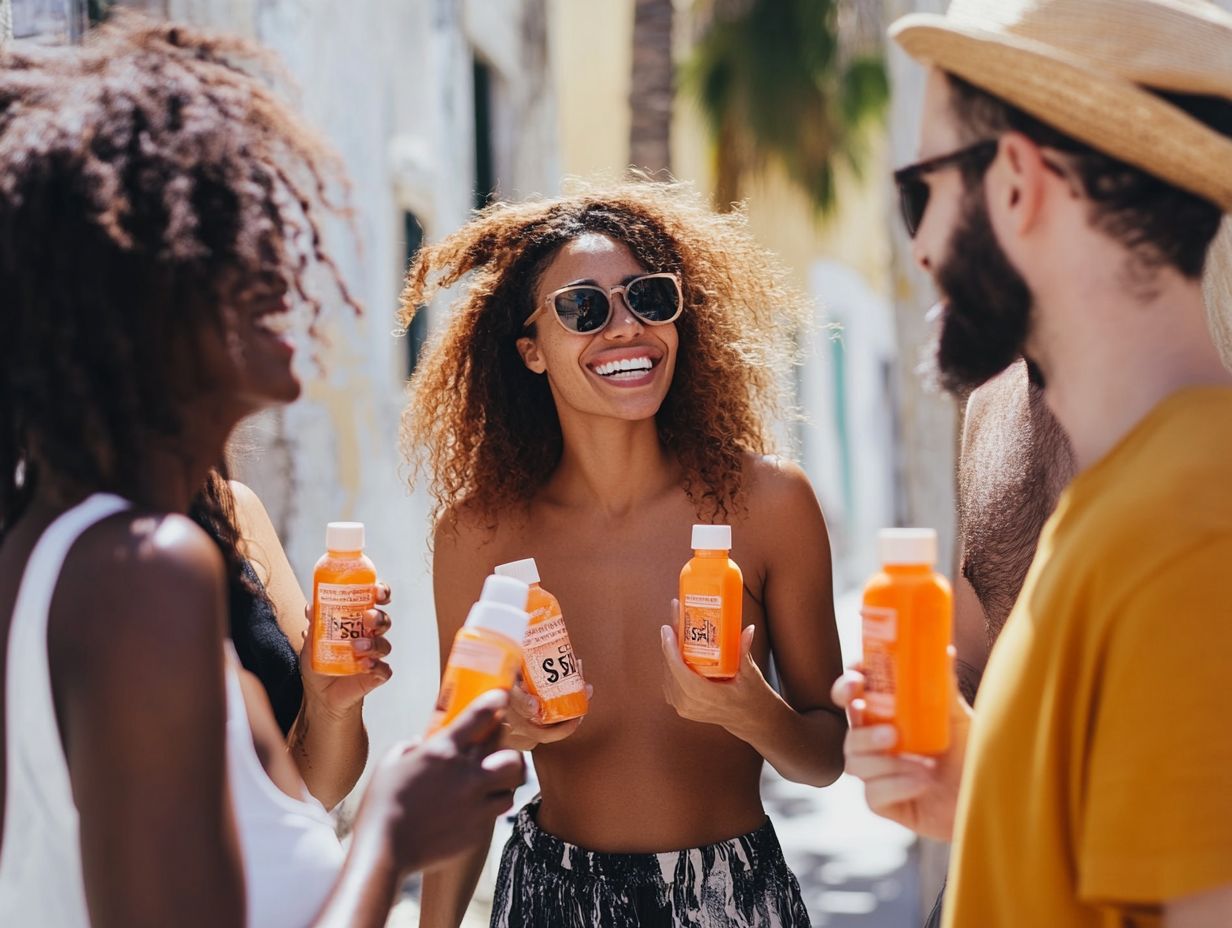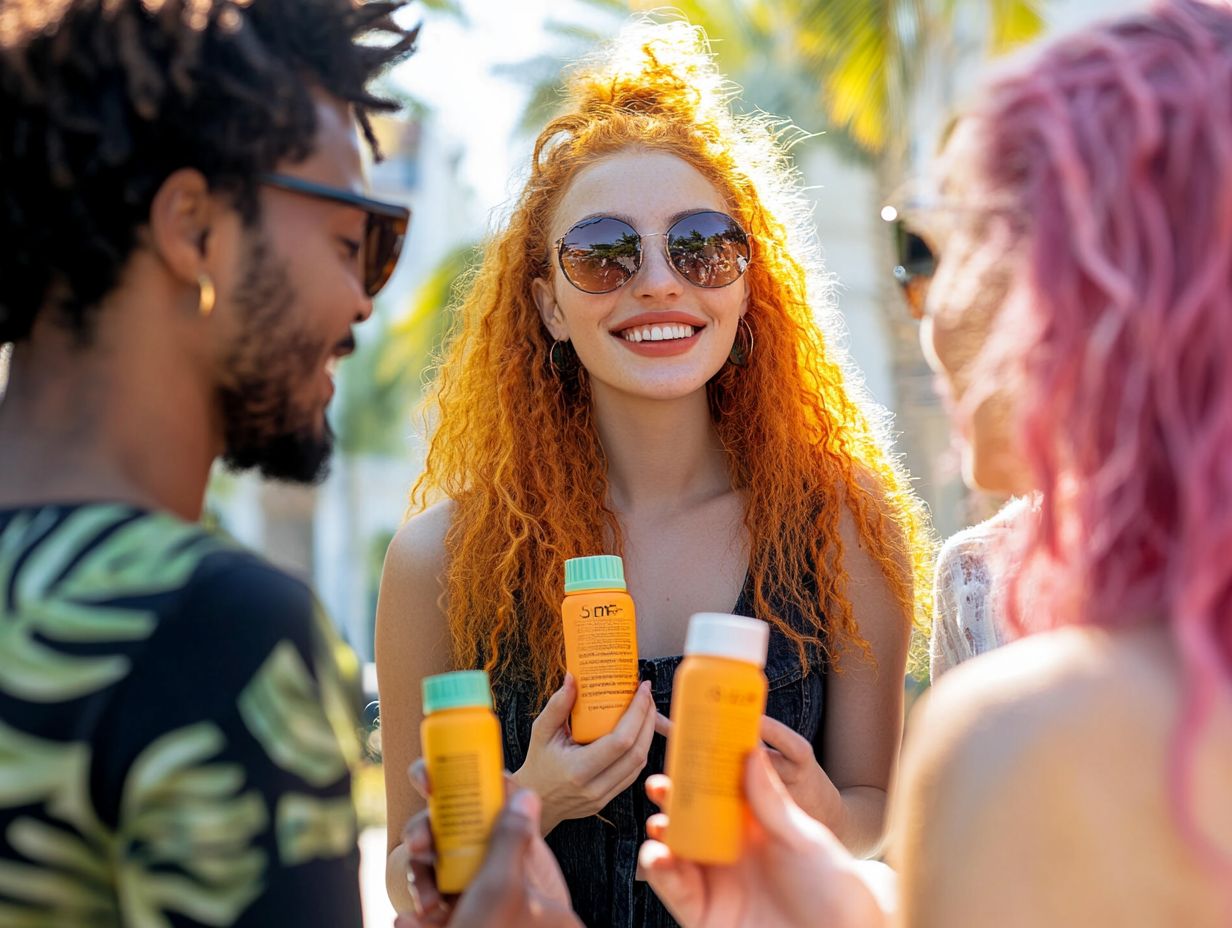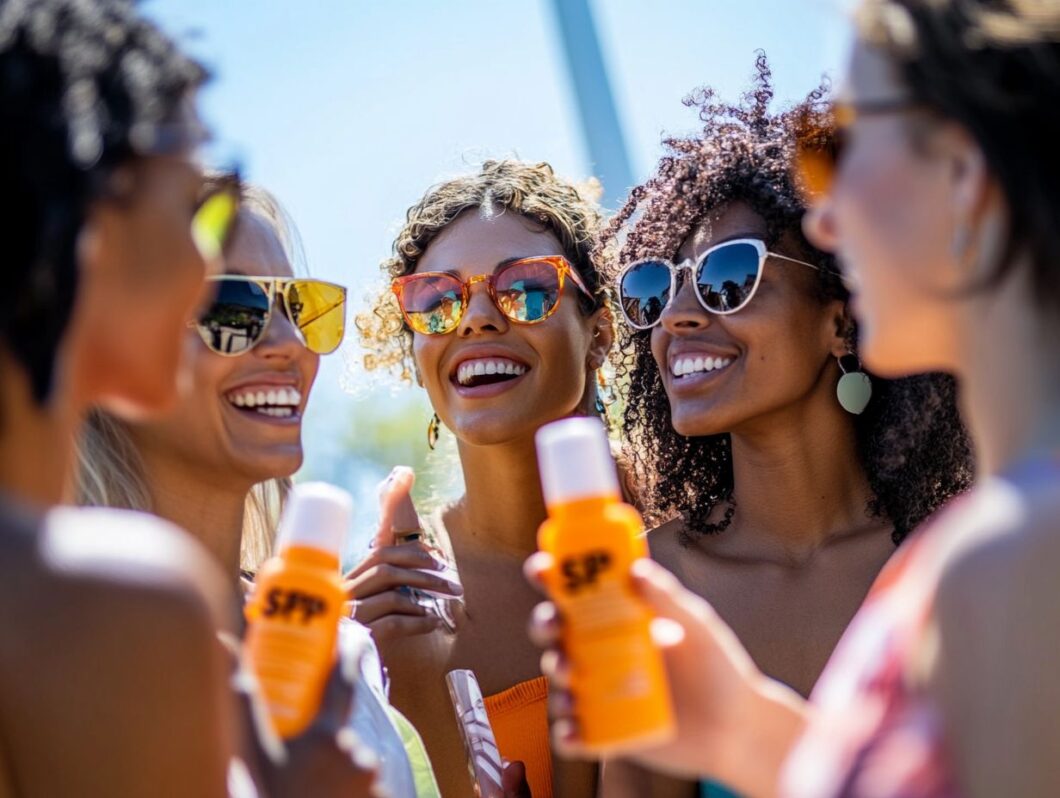When it comes to protecting my skin from harmful UV rays, understanding SPF is essential. However, with the plethora of options available, determining the right one for my skin tone can be challenging. This analysis delves into various aspects, including the Fitzpatrick Scale and tailored recommendations for different skin types.
I will debunk common myths and share best practices for applying sunscreen effectively. By doing so, I aim to provide insights on how to stay safe in the sun while maintaining healthy and radiant skin.
Key Takeaways:
What is SPF and How Does it Work?

SPF, or Sun Protection Factor, is a crucial measure for evaluating the effectiveness of sunscreen products in protecting the skin from harmful UV rays, specifically UVA and UVB rays. These rays can lead to skin damage, sunburn, and even skin cancer.
Understanding how SPF works is essential for making informed decisions about sun safety and skin health, particularly when participating in outdoor activities. While a higher SPF indicates greater protection against UV rays, the differences in protection and application practices can vary based on individual skin types and tones.
It’s important to note that SPF primarily focuses on blocking UVB rays, which are the main causes of sunburn. However, I must not overlook the significance of UVA rays, which can penetrate deeper into the skin and contribute to premature aging and skin cancer. Therefore, broad-spectrum protection is vital.
Dermatologists often recommend sunscreens that contain ingredients like titanium dioxide and zinc oxide, as they provide effective physical barriers against both UVA and UVB rays.
The Skin Cancer Foundation highlights the importance of daily sunscreen use, regardless of the weather. This practice is essential for ensuring consistent protection and minimizing the risks associated with prolonged sun exposure.
Determining Your Skin Tone
Determining my skin tone is crucial for selecting the right sunscreen products and understanding how my skin type reacts to sun exposure. I often refer to the Fitzpatrick scale, which is commonly used to categorize skin tones from fair to dark.
This classification significantly influences the level of sun protection I require, particularly in preventing skin conditions like melanoma and managing skin aging. By knowing my skin tone, I can make informed decisions about appropriate SPF levels and sunscreen formulations to ensure optimal skin protection.
Understanding the Fitzpatrick Scale

The Fitzpatrick scale is a classification system that categorizes skin types based on their response to sun exposure, specifically in terms of sunburn susceptibility and tanning ability. It ranges from Type I, characterized by very fair skin that burns easily, to Type VI, which is very dark and rarely burns. Understanding my Fitzpatrick type is crucial, as it directly influences my choices in sunscreen products, helping me determine the appropriate SPF and broad-spectrum protection required to prevent sunburn and long-term skin damage.
Each skin type possesses distinct characteristics that affect its sun protection needs. For instance, individuals classified as Type I have minimal melanin, making them more prone to burning and necessitating high-SPF products with physical blockers like zinc oxide for adequate defense.
Moving to Type III, which exhibits moderate sensitivity, those individuals enhance their protection with formulations that balance broad-spectrum sunscreen factors to effectively ward off UV rays.
As one progresses towards Type VI, it is essential to recognize that, despite having more melanin, these individuals are not immune to UV damage; thus, they also benefit from sunscreens that provide hydration and support overall skin health.
By understanding these variations, I am better equipped to select the most appropriate strategies to safeguard against harmful environmental effects.
Choosing the Right SPF for Your Skin Tone
Selecting the appropriate SPF for my skin tone is essential for maximizing sun protection while reducing the risks of skin damage, sunburn, and ultimately skin cancer.
Several factors influence my decision, including my Fitzpatrick skin type, the level of outdoor activity I engage in, and the formulation of the sunscreen—whether it be physical or chemical.
For example, I recognize that individuals with fair skin may require a higher SPF compared to those with darker skin tones. However, it is imperative for everyone, regardless of skin tone, to prioritize broad-spectrum protection to shield against both UVA and UVB rays.
SPF Recommendations for Different Skin Tones

When considering SPF recommendations for different skin tones, I recognize the importance of understanding how varying levels of melanin influence the skin’s natural defense against UV rays. Individuals with fair skin, who are more prone to sunburn and skin damage, typically require a higher SPF—generally 30 or above.
In contrast, those with medium to dark skin tones may find that an SPF of 15-30 provides adequate protection. It is essential for everyone, regardless of their skin tone, to prioritize the use of broad-spectrum sunscreen products to effectively shield against both UVA and UVB rays.
“`html
In selecting an appropriate SPF, I take into account my lifestyle, particularly the duration spent outdoors and the intensity of the activities I engage in. For those involved in vigorous outdoor activities or swimming, choosing a water-resistant sunscreen is paramount. This ensures that the protective barrier remains effective against sweat and water exposure. For more information, check out Understanding SPF: Which One is Right for Your Skin Tone?.
“`
Reputable brands, such as CeraVe, offer a range of water-resistant options tailored to different skin types and preferences, enabling active individuals to enjoy their time in the sun without compromising skin safety and health.
Common Misconceptions About SPF
I recognize that common misconceptions about SPF can lead to insufficient skin protection, increasing the risks of sunburn, skin damage, and even skin cancer.
Many people tend to believe that higher SPF values offer significantly longer protection or that individuals with darker skin tones do not require sunscreen at all. However, it is crucial to understand that, regardless of skin tone or the duration of outdoor activities, everyone should be meticulous about applying sunscreen.
Choosing broad-spectrum products is essential to ensure comprehensive protection against both UVA and UVB rays.
Debunking Myths and Misunderstandings

Debunking myths and misunderstandings surrounding sunscreen and SPF is crucial for promoting effective sun safety practices. Many individuals mistakenly believe that sunscreen is only necessary on sunny days or that they can forgo it if they have dark skin.
In reality, UV rays can penetrate clouds and affect all skin types, making it essential for everyone to incorporate sunscreen into their daily skin protection routine, regardless of their tan or skin tone. This practice is vital for preventing sunburn and reducing the risk of skin cancer.
Some people think that a higher SPF offers complete protection, not realizing that no sunscreen can provide 100% blockage from harmful rays. Dermatologists recommend using broad-spectrum products with an SPF of at least 30, reapplying every two hours, especially after sweating or swimming.
There is also a common misconception that sunscreen is only needed in summer; however, significant sun exposure can occur during winter and even while indoors, as reflections off surfaces can intensify UV rays. Understanding these factors is essential for everyone to adopt a proactive approach to skin health, ultimately safeguarding against premature aging and skin complications.
Tips for Properly Applying SPF
I understand that properly applying sunscreen is essential for maximizing skin protection against harmful UV rays and minimizing sun-related skin damage.
To achieve optimal results, I adhere to best practices for sunscreen application, which include using a generous amount of sunscreen on all exposed skin, ensuring even coverage, and allowing adequate time for absorption before sun exposure.
Furthermore, I recognize the importance of reapplying sunscreen every two hours, or more frequently if I am swimming or sweating, particularly when using water-resistant formulations.
Best Practices for Sun Protection
Implementing best practices for sun protection requires a comprehensive approach that encompasses proper sunscreen application, protective clothing, and seeking shade during peak sun hours. To effectively safeguard against skin damage and sunburn, I prioritize using broad-spectrum sunscreen with an appropriate SPF tailored to my skin type. Engaging in sun protection strategies is essential whenever I am involved in outdoor activities, ensuring that skin health remains a top priority.
To maximize the effectiveness of sunscreen, I apply it generously to all exposed skin at least 15 minutes before stepping outside, and I make it a point to reapply every two hours, or more frequently if I am swimming or sweating. I also make thoughtful clothing choices, such as wearing lightweight, long-sleeved shirts and wide-brimmed hats, to provide additional protection against harmful UV rays.
Adopting behavioral strategies, such as avoiding tanning beds and limiting outdoor activities during midday sun, is key to significantly reducing the risk of skin damage. By consistently following these practices, I not only protect my skin in the short term but also promote long-term skin health, thereby minimizing the risk of premature aging and skin cancer.


